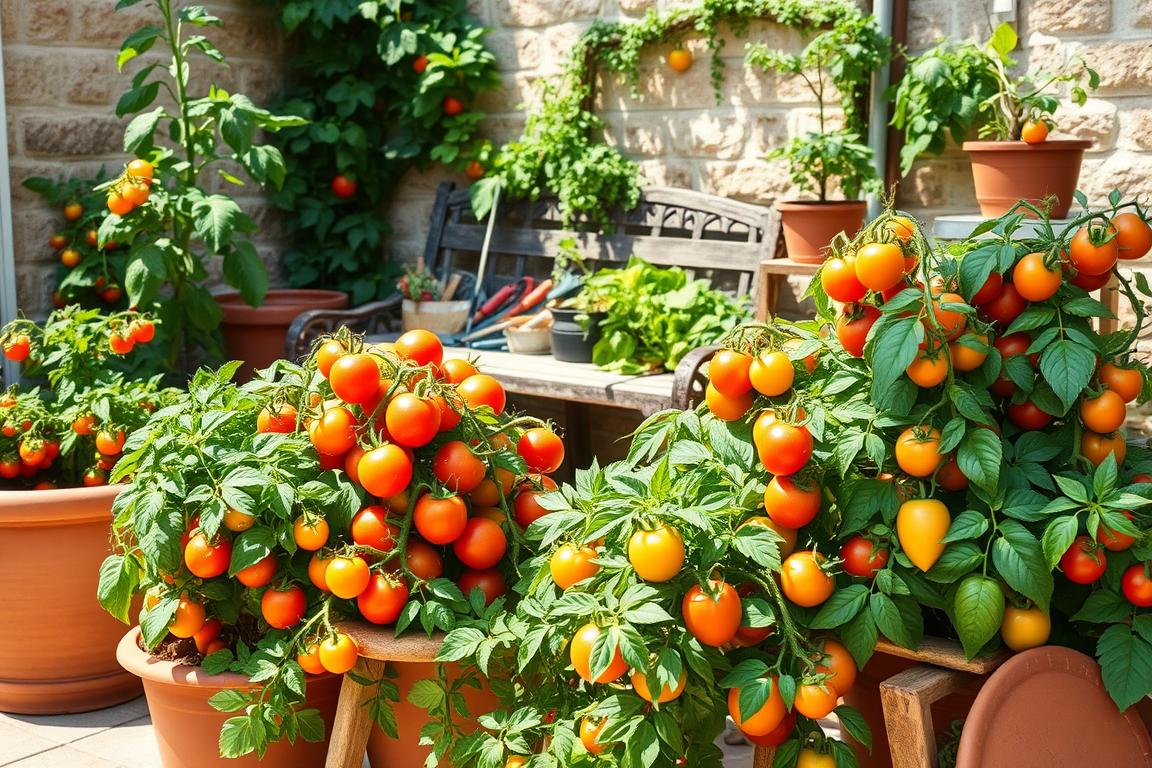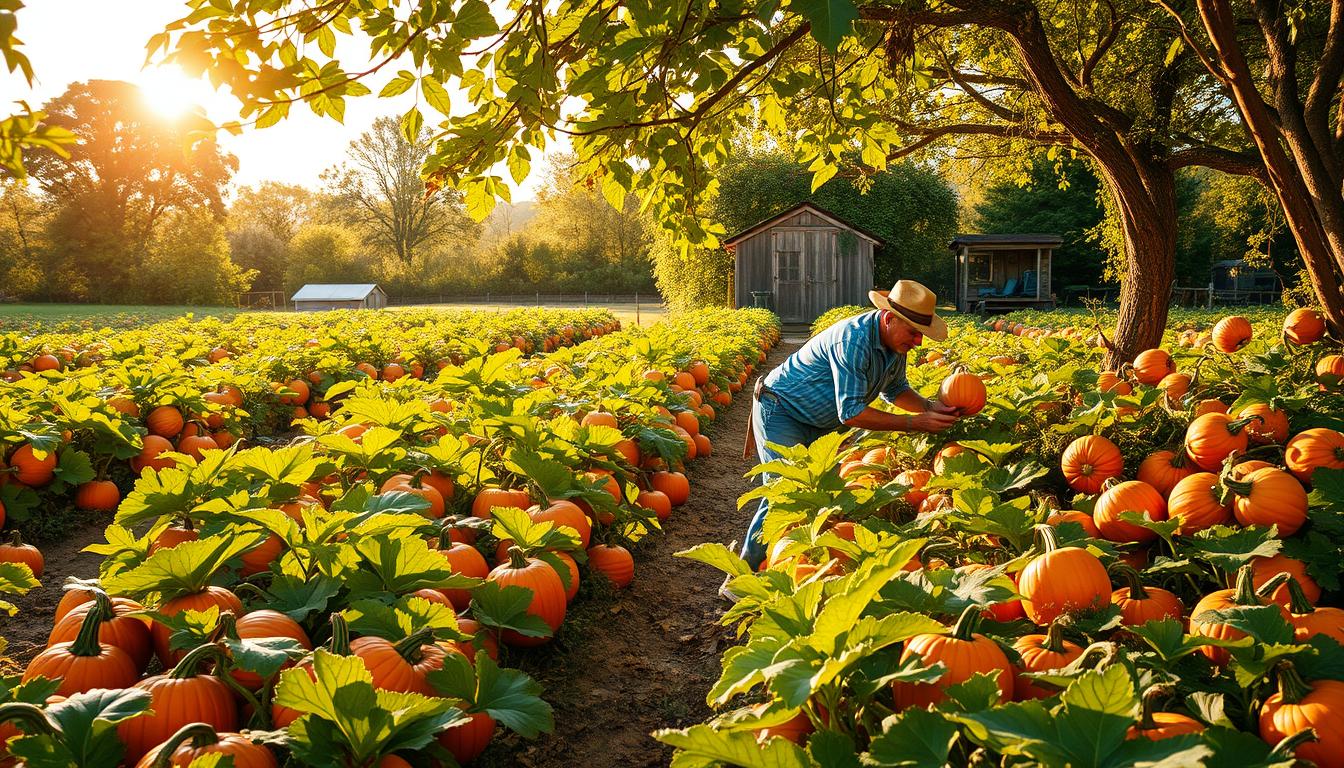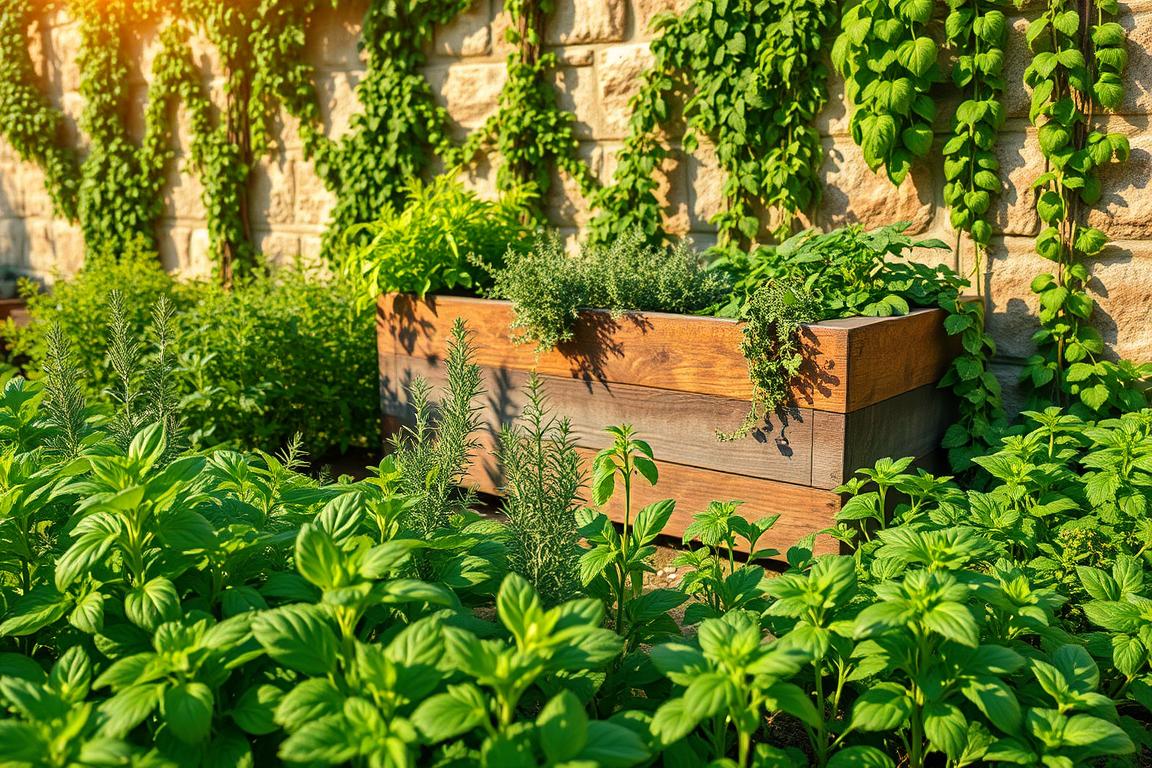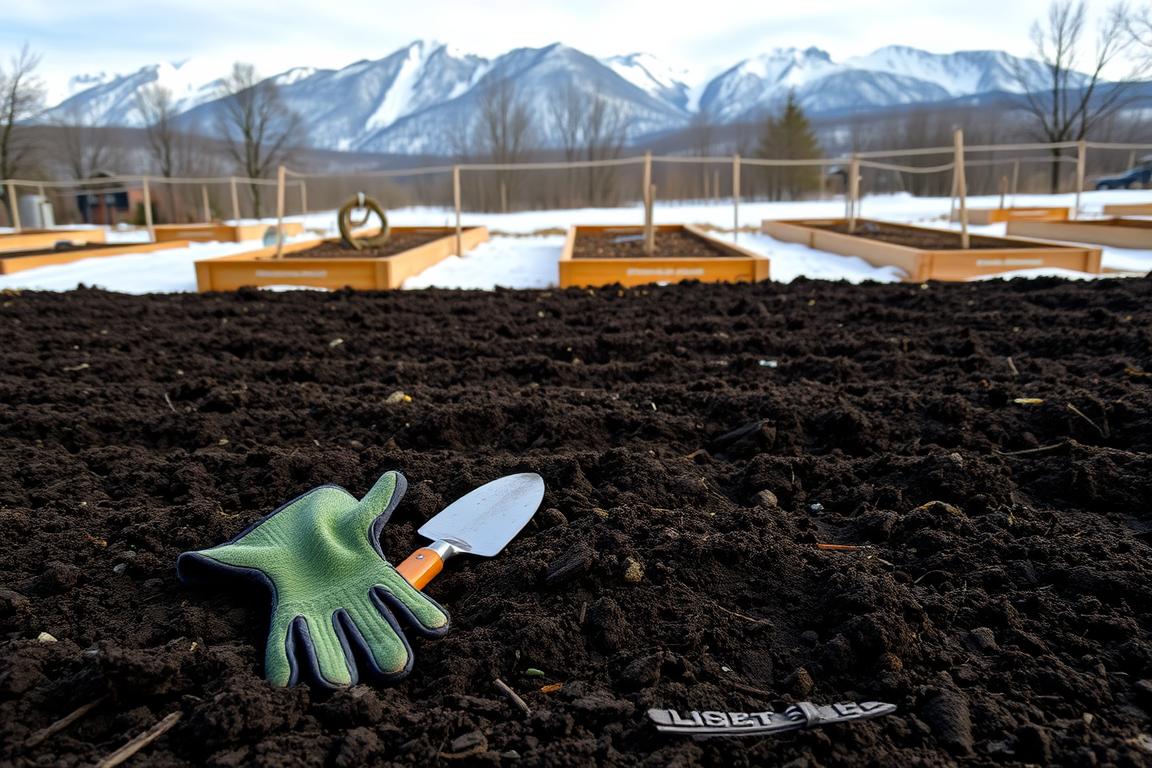Gardening in small spaces is now more popular, thanks to city living. Container gardening is a great way to use every inch of space. It uses vertical space well, making the most of small areas.
This method is great for both city and suburban gardeners. It lets you maximize your tomato yields in tiny spots. Even with a small patio or balcony, you can grow lots of fresh, tasty tomatoes.
Key Takeaways
- Container gardening is perfect for small-space gardeners.
- It allows for flexibility and mobility in gardening.
- Tomato yields can be maximized in small areas.
- Ideal for urban and suburban gardening.
- Utilizes vertical space effectively.
Why Container Gardening Works for Tomatoes
Container gardening has changed how we grow tomatoes. It’s great for gardeners with little space. This method is popular for many reasons.
Benefits of Growing Tomatoes in Containers
Growing tomatoes in containers helps avoid soil diseases and pests. It also lets you control the soil’s quality and pH. As Tomato container growing experts say, this control is key for healthy plants.
Space Efficiency for Urban and Suburban Gardeners
Container vegetable gardening is perfect for small space gardening and urban gardening techniques. It lets gardeners use balconies, patios, or small backyards well.
Mobility and Season Extension Advantages
Containers can be moved to get more sunlight and protect from bad weather. This helps extend the growing season. This mobility is a big plus for urban gardening techniques users.
Selecting the Perfect Containers for Tomato Success
Starting a tomato harvest begins with the right container. The perfect one supports and conditions your tomato plants to grow well.
Container Size Requirements for Healthy Tomato Plants
Choose a container at least 12-14” deep for tomato plants. For micro tomatoes, 7-inch containers work well.
| Tomato Variety | Recommended Container Depth |
|---|---|
| Micro Tomatoes | 7 inches |
| Standard Tomatoes | 12-14 inches |
Material Choices: Plastic, Terracotta, Fabric, and More
Containers are made from different materials. Plastic containers are light and easy to clean. Terracotta pots improve aeration and moisture control.
Essential Drainage Solutions for Root Health
Good drainage is key to avoid waterlogged soil. Make sure your container has holes for drainage to keep plants healthy.
Best Tomato Varieties for Container Gardening
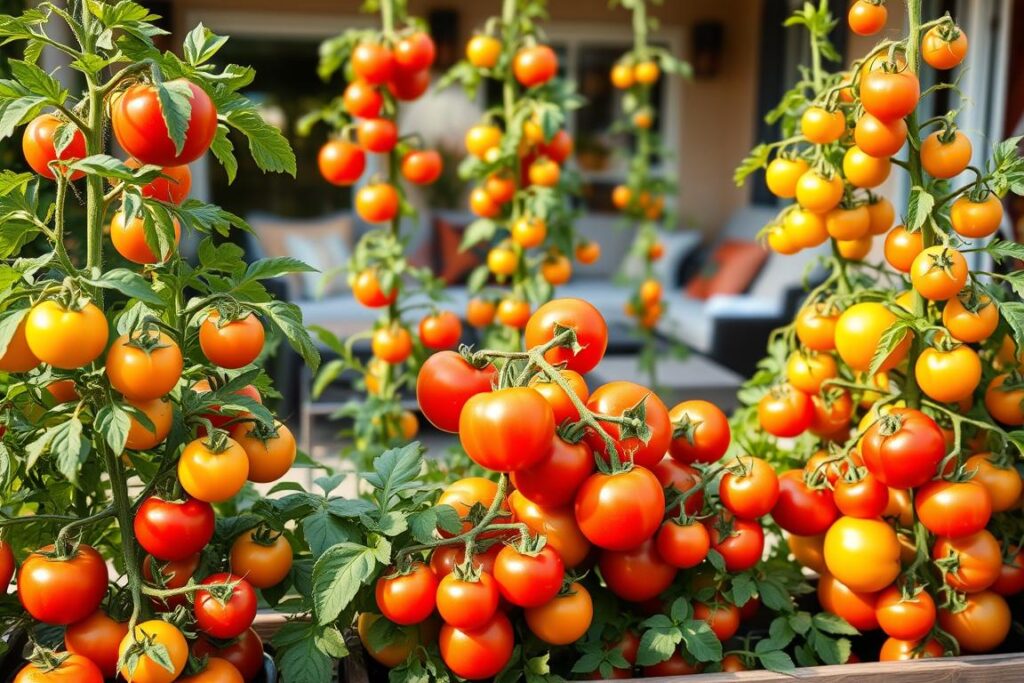
Choosing the right tomato variety is key for a great harvest in containers. Container gardening is popular because it saves space and is flexible.
Determinate vs. Indeterminate Varieties for Small Spaces
It’s important to know the difference between determinate and indeterminate tomatoes for containers. Determinate tomatoes are better for containers because they are small, produce fruit all at once, and need little support. On the other hand, indeterminate tomatoes are bigger, keep producing fruit, and need more space and support.
| Variety Type | Growth Habit | Container Suitability |
|---|---|---|
| Determinate | Compact, bushy | High |
| Indeterminate | Vining, sprawling | Low to Moderate |
Compact and Dwarf Varieties That Thrive in Containers
Compact and dwarf tomatoes are perfect for containers because they are small and produce a lot. ‘Patio’, ‘Tiny Tim’, and ‘Red Robin’ are great for containers. They are compact, produce well, and need little support.
Productive Heirloom and Hybrid Options for Limited Space
There are many heirloom and hybrid tomatoes that do well in containers. Heirloom varieties like ‘Brandywine’ and ‘Cherokee Purple’ do well in big containers. Hybrid varieties like ‘Better Boy’ and ‘Early Girl’ are disease-resistant and yield a lot in small spaces.
Container Tomato Gardening: Grow Big Yields in Small Spaces
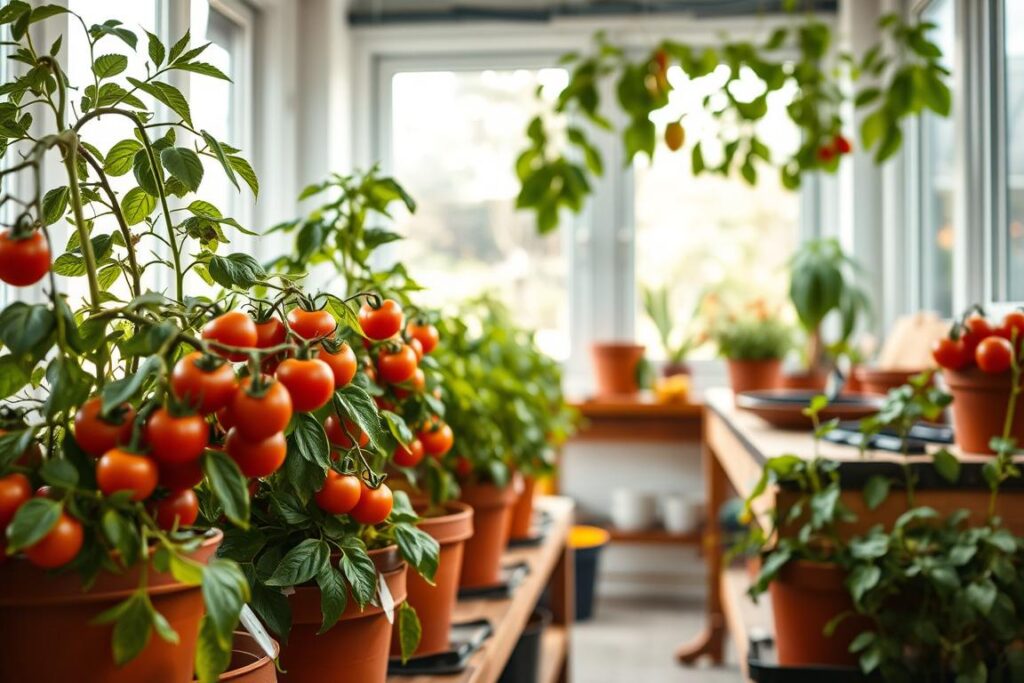
To get a lot of tomatoes from containers, focus on the soil, water, and fertilizer. You can grow tomatoes in tiny spaces with the right steps.
Creating the Ideal Soil Mix for Container Tomatoes
A good soil mix is key for healthy tomatoes. Mix high-quality potting soil with organic matter like compost. This mix keeps the soil moist but drains well and adds nutrients.
Watering Techniques for Consistent Moisture
Tomatoes need consistent moisture when they’re producing fruit. Water when the top inch of soil is dry. Don’t water the leaves to avoid diseases; water at the soil level instead.
Fertilizing Strategies for Maximum Production
Fertilizing is key for more tomatoes. You can use organic or synthetic fertilizers. Organic choices like compost tea and fish emulsion are slow-acting. Synthetic fertilizers give quick nutrients but can harm soil if used too much.
Organic vs. Synthetic Fertilizer Options
Organic fertilizers help soil health over time. Synthetic fertilizers give quick nutrients but can harm soil life if used too much.
Feeding Schedules Throughout the Growing Season
Feed tomatoes with a balanced fertilizer once a month. When they start fruiting, use a high-phosphorus fertilizer to help with fruiting.
| Fertilizer Type | Application Frequency | Benefits |
|---|---|---|
| Organic (Compost Tea) | Every 2 weeks | Improves soil health, slow release |
| Synthetic (Balanced NPK) | Once a month | Quick nutrient uptake, precise NPK ratio |
Supporting and Pruning Container Tomatoes
To get the most from container gardening, it’s key to support and prune tomatoes. Tomatoes need support as they grow. This keeps them upright and helps them produce more fruit.
Space-Saving Support Systems
Stakes, cages, or trellises are great for supporting tomato plants in containers. Cheryl Miller prunes her micro tomatoes for better airflow and growth. These supports help keep plants organized and use space well.
| Support System | Description | Best for |
|---|---|---|
| Stakes | Stakes are simple and effective, providing direct support. | Indeterminate varieties |
| Cages | Cages surround the plant, offering comprehensive support. | Determinate and Indeterminate varieties |
| Trellises | Trellises provide a structure for the plant to climb on. | Indeterminate varieties |
Strategic Pruning for Bigger Harvests
Pruning is vital for healthy growth and more yields. Remove lower leaves to stop disease and improve air flow.
Training Methods to Maximize Small Spaces
Training tomato plants to grow vertically boosts yields in small spaces. Use a trellis or stake to train plants upwards. This maximizes your container garden.
With these support and pruning tips, you’ll enjoy a rich harvest from your container tomatoes.
Preventing and Solving Common Container Tomato Problems
Successful container tomato gardening starts with knowing common problems. Being aware helps you prevent and solve issues. This way, you can grow a healthy and productive crop.
Identifying and Treating Tomato Diseases in Containers
Diseases like fungal infections, bacterial spot, and viruses can spread fast in containers. Check your plants often and remove any sick leaves or stems. Use organic fungicides or bactericides when needed.
Natural Pest Management for Container Gardens
Pests can be a big problem in container gardens. Use insecticidal soap or neem oil to fight pests. Also, try planting basil or marigolds to keep pests away naturally.
Fixing Nutrient Deficiencies and Environmental Stress
Nutrient shortages and stress can hurt container tomatoes. Watch for signs like yellow leaves or slow growth. Adjust your fertilizing and watering to help. Make sure your containers drain well to avoid soggy soil.
Grow Your Own Tomatoes in Small Spaces
Container tomato gardening is perfect for city gardeners. It lets you grow lots of tomatoes even when you have little space. Choosing the right containers and tomatoes, and using good gardening methods, can lead to a great harvest.
This article gives you the tools to become a pro at growing tomatoes in containers. No matter if you have a tiny balcony, patio, or backyard, you can still grow lots of tomatoes. Enjoy fresh, tasty tomatoes all summer long.
Container tomato gardening boosts your skills in gardening small spaces. It also teaches you valuable tips for gardening in the city. These tips can help you in many other gardening projects.


